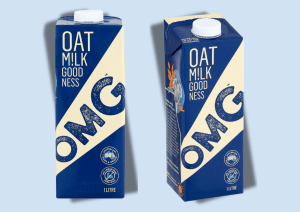Open IIOT works to simplify the jargon surrounding Industry 4.0 in an effort to boost the implementation of Industry 4.0 among local manufacturers.
The Open IIOT group – consisting of APPMA members SMC Corporation and NORD Drivesystems, as well as Zi-Argus, Beckhoff Automation, and Balluff – embarked on this journey to fast track the local economy’s uptake of this all-important global trend and to help facilitate growth in manufacturing.
According to Open IIOT, one of the topics which is becoming more and more of a buzz word in the industry today is artificial intelligence. What does this mean to manufacturing and how can it practically be used to deliver commercial value?

Open IIOT asked Zygmunt Szpak, a senior research associate at the Australian Institute for Machine Learning, to elucidate the topic. Szpak and his team run seminars around the country with the aim to simplify the topic and provide a business connection between AI and real-world solutions.
As Szpak explained, one of the most conspicuous technologies emerging from the current Fourth Industrial Revolution is artificial intelligence (AI). AI has become a catch-all phrase that blankets many related concepts. Depending on the domain of application, one may come across terms such as machine learning, natural language processing, and computer vision, to name but a few.
“AI is fundamentally changing jobs,” Szpak said. “Unlike previous industrial revolutions, it is not just blue-collar workers who are witnessing automation of many of their duties. AI has given rise to a new type of machine – a prediction machine – which can automate numerous cognitive tasks traditionally associated with white-collar workers. When one recognises that contemporary AI is essentially about prediction, one sees that the application of the technology is nothing more than another kind of advanced automation of specific tasks.”
Szpak said an example of these tasks is the chore of segregating span emails from legitimate correspondence, which boils down to analysing word patterns.
“Given emails with text such as ‘prince’ and ‘transfer a million dollars’, predict whether the email is a scam or not. Similarly, given a picture of an item on a processing line, predict whether it is defective or not,” he said.
“Astute readers may recognise that these types of technologies have been with us for a long time. One can attribute AI's recent rise to prominence to at least two factors. Firstly, the AI predictions have become substantially more accurate across a broad spectrum of applications. Secondly, the cost of acquiring, storing and manipulating large datasets (the input to the AI), has fallen significantly. The combination of these two factors has lowered the price of making accurate predictions, and hence increased demand and adoption.”
Szpak said the capacity for internet-of-things (IoT) sensors to continuously acquire real-time data has expanded the reach of AI and triggered many imaginative and revolutionary applications.
“AI thrives in applications where data is abundant,” he said. “Humans are easily overwhelmed when faced with a deluge of information; it is not easy for us to separate relevant from irrelevant information. AI, on the other hand, can detect subtle patterns and learn intricate associations between various data streams.
“One can, for example, place cheap vibration sensors on machinery and teach an AI system to predict how close to failure the equipment is. AI can discover new successful wine blends by analysing recipes, sales data, and customer preferences. Farmers can use AI to monitor crops continuously and predict what combination of water and nutrients maximises yield. Organisations can automate routine inspection and quality assurance tasks. In general, one can replace many gut-feel decisions with decisions that are informed by evidence-based predictions.”
Szpak said it is because predictions are inputs to decision making, prediction machines continue to have such a broad impact.
“Success depends upon prudent decision making,” he said. “But prudence demands a time consuming and careful examination of facts and data. AI can conduct the necessary meticulous analysis of facts and data quickly and effortlessly, thereby increasing the quality of decision making, and ultimately, the likelihood of success.”






